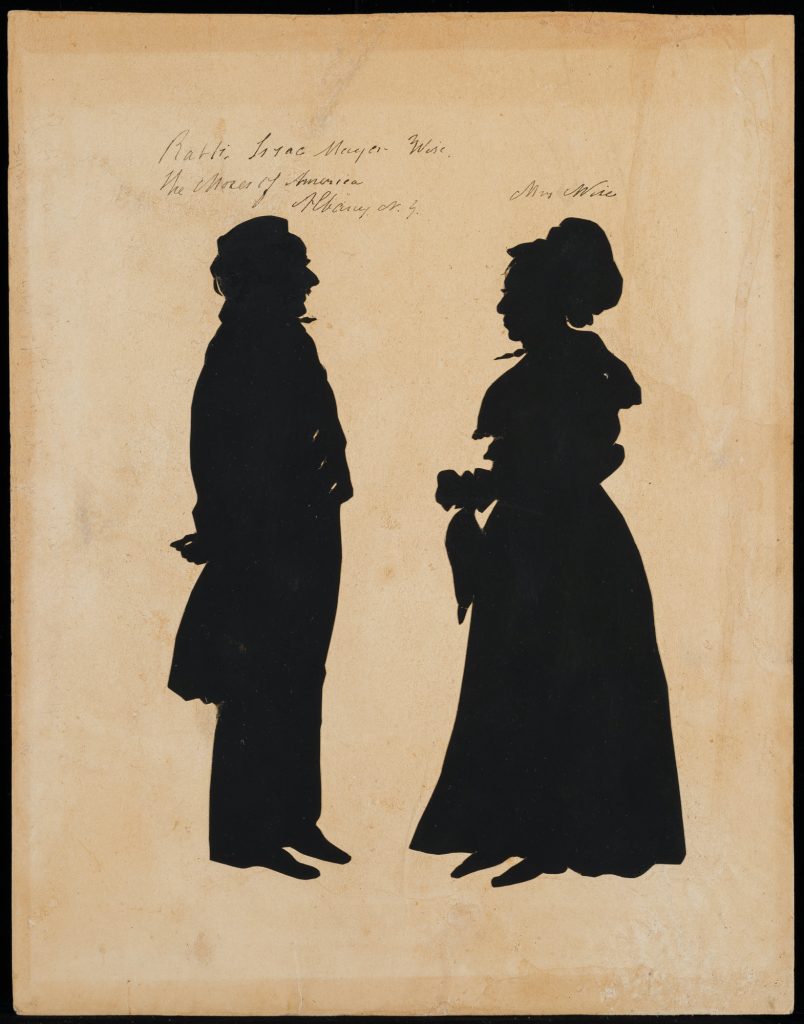Isaac Mayer Wise was a Reform rabbi, publisher, author, and atowering figure in nineteenth-century American Jewish life. Born inSteingrub, in Moravia, then part of the Austro-Hungarian Empire, hewas the son of Leo Weis, a teacher, and Regina Rebeka Weis. Hereceived early Hebrew education from his father and later studied inPrague. In 1843 he was appointed rabbi in Radnitz, where he serveduntil he departed for America in 1846. In 1844 he married ThereBloch, daughter of Hermann and Anna Blovh. Upon their arrival inAmerica, they changed the spelling of their surname to Wise.
Initially he servedas rabbi of Congregation Beth-El in Albany. During the eight years ofhis tenure there, he initiated many reforms, including the countingof women as part of a minyan, allowing men and women to sittogether during services, and eliminating the Bar Mitzvah—which heconsidered outdated—in favor of a confirmation ceremony, open toboth boys and girls. He applied to be rabbi at Kahal Kadosh BethElohim in Charleston and informed the congregation that he did notbelieve in the coming of the messiah or the resurrection of the dead,and members of the shocked synagogue published his statements in anewspaper. Word got back to Albany, and in 1850 the trustees ofBeth-El fired him. Despite this, he showed up the next day to leadservices, and a fight broke out between his defenders and detractors.It was so rowdy that the sheriff was called, the synagogue cleared,and the doors locked. This marked the end of Wise’s time with thecongregation.
Hissupporters started a new congregation, Ashne Emeth, where he servedas rabbi until 1854. Because Anshe Emeth was unable to pay his fullsalary, in 1852 some of his supporters, particularly Senator WilliamH. Seward, helped get him a position as chaplain of the Legislatureof the State of New York.
In1853 he accepted a position as rabbi of Congregation Bene Yeshurun atthe Lodge Street Synagogue in Cincinnati on the condition that it bea lifetime appointment. The following year he moved to the city thathe would indeed call home for the rest of life having just publishedThe History of the Israelitish Nation, a controversial bookthat, he claimed, was based in “such facts as are able to standthe test of criticism,” eliminating numerous cherished miraclesand dogmas. Soon after his arrival, he began publishing TheIsraelite (later The American Israelite). He spearheadedthe building of the new Plum Street Temple, erected in 1866, laterrenamed the Isaac M. Wise Temple. He also led efforts to found HebrewUnion College in Cincinnati, a Reform theological seminary whichopened its doors in 1875.
Wisealso worked to try to unify American Judaism, beginning with theCleveland Conference of 1855, followed by several other rabbinicconferences and the founding of the Central Conference of AmericanRabbis, the principal organization of Reform rabbis in the UnitedStates.
Wisepublished numerous books, including The Essence of Judaism,Judaism and Christianity: Their Agreements and Disagreements,Judaism: Its Doctrines and Duties, as well as about a dozennovels. He also compiled and composed Minhag America, aprayerbook that was quickly adopted by most of the Reformcongregations in the southern and western United States.
Theresaand Isaac had ten children, and after her death, in 1874, Isaacmarried Selma Bondi, with whom he had another four children.
